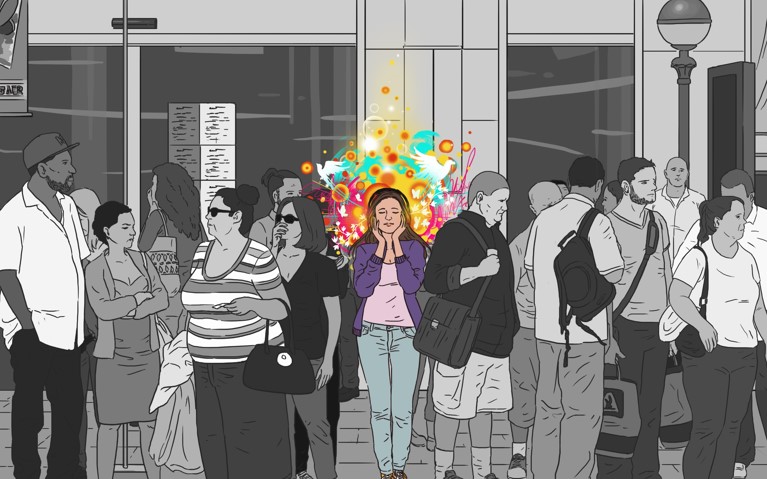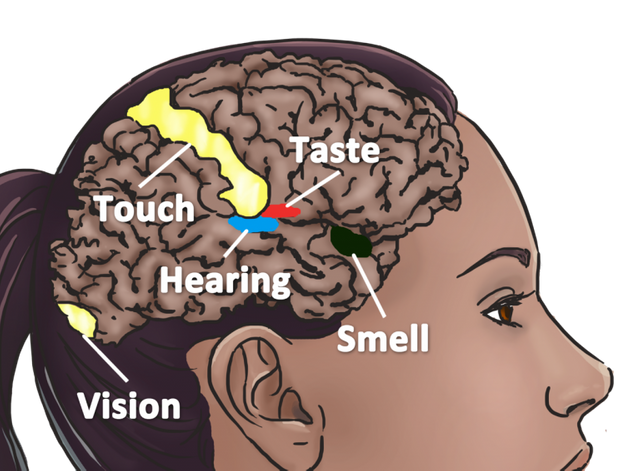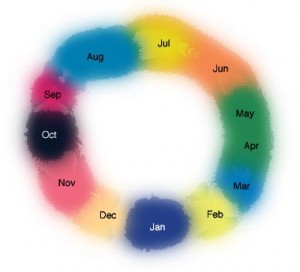The Taste Of Sound, The Scent Of Colours And The Sight Of Smell; Life As A Synesthete
There is a certain rare group of individuals, they only measure up to about 5 percent of the world’s population. They can taste sounds, smell colors or see scents, some even feel music on certain parts of their bodies, perceive letters and numbers as colored and having personalities. Also see the week as arranged in a particular shape in their mental space.
Yes, you did not read that wrong. Those are experiences by actual normal people perceiving the world with blended senses.
Sorry Charles, these are not candidates for the Xavier institute.
These people experience a condition known as Synesthesia, put plainly as a blending of the senses.
WHAT IS SYNESTHESIA?
Synesthesia is a neurological condition in which a person experiences "crossed" responses to stimuli. It occurs when stimulation of one sensory or cognitive pathway (e.g., hearing) leads to automatic, involuntary experiences in a second sensory or cognitive pathway (e.g., vision).
Derived from the Greek words “Syn” Union and “esthesia” meaning perception. Translating loosely to United perception.
Imagine this, in our brain we have different sensory areas that are responsible for different sensory experiences. As the auditory cortex is on the lateral side of our brain (on the temporal cortex). The visual cortex, the area that creates “vision” is in the back of our brain (occipital lobe).
For people that resonate with synesthesia these areas are “neurologically stronger connected”. So, if a synesthete hears a sound, the auditory area is activated. And additionally, the visual area is also co-activated. This leads to a visual experience while listening to sounds or music.
So, while you walk on the street and listen to music, to some other people, it’s an entire different universe out there.
WHY DOES IT HAPPEN?
According to Sean Day (president of the American Synesthesia Association), current research, shows the brains of synesthetes appears to be anatomically different (although scientists have only studied a few types of synesthesia so far). In particular, it seems that the neural connections between different sensory parts of the brain are more myelinated in people with synesthesia. Myelin is a fatty sheath that surrounds neurons and enables neural signals to travel more quickly.
"Because the myelination is different, the interaction between certain parts of the brain is different," explains Day. This allows parts of the brain that are responsible for different senses to communicate when they normally wouldn't.
Hypermyelination could explain why synesthetic experiences seem so real for people
Another theory, based on research conducted by Daphne Maurer and Catherine Mondloch at McMaster University in Ontario, Canada, suggests all infants may begin life as synesthetes. In this way of thinking, animals and humans are born with immature brains that are highly malleable. Connections between different sensory parts of the brain exists that later become pruned or blocked as an organism matures.
They hypothesize that if these connections between the senses are functional, as some experiments suggest, then infants should experience the world in a way that is similar to synesthetic adults.
In a variation of this theory, babies don't have five distinct senses but rather one all-encompassing sense that responds to the total amount of incoming stimulation. So, when a baby hears her mother's voice, she is also seeing it and smelling it.
OCCURENCE
Synesthesia can involve any of the senses. The most common form, colored letters and numbers, occurs when someone always sees a certain color in response to a certain letter of the alphabet or number. For example, a synesthete (a person with synesthesia) might see the word "plane" as mint green or the number "4" as dark brown.
There are also synesthetes who hear sounds in response to smell, who smell in response to touch, or who feel something in response to sight. Just about any combination of the senses is possible. There are some people who possess synesthesia involving three or even more senses, but this is extremely rare.
Shuffle the senses as you wish, and there are many different types of synesthesia possible with over 60 types that have been reported, some of which include:
Grapheme-color synesthesia (Ideasthesia): perceiving letters and numbers in colors.
Spatial sequence synesthesia (spatio-temporal synesthesia): Perceiving the alphabet, or calendar units such as the year or a week as shapes in space.
Number form: The numbers are arranged in a mental space.
Chromesthesia: The perception of music in shapes and colors.
Auditory-tactile synesthesia: you hear something and you can touch it.
Ordinal linguistic personification (OLP): perceiving letters and numbers as personalities.
Mirror - touch synesthesia / mirror - pain
synesthesia: Seeing somebody being touched or in pain and then perceiving it as well.Lexical gustatory synesthesia: Words or numbers have a taste.
Synesthetic perceptions are specific to each person. Different people with synesthesia almost always disagree on their perceptions. In other words, if one synesthete thinks that the letter "q" is colored blue, another synesthete might see "q" as orange.
If you fall into any of these groups, then you have a neurological gift that makes the rest of us literally and actually green with envy.
Studies show that only one out of two thousand people are synesthetes, and it is more common among females. In fact, there’s a 6:1 ratio of female to male synesthetes.
Yeah, even more reason to show off…Pfft!
DIAGNOSIS
There is no officially established method of diagnosing synesthesia, but according to some guidelines developed by Richard Cytowic, MD, a leading synesthesia researcher, synesthetic perceptions are:
Involuntary: Synesthetes do not actively think about their perceptions; they just happen.
Projected: Rather than experiencing something in the "mind's eye," as might happen when you are asked to imagine a color, a synesthete often actually sees a color projected outside of the body.
Durable and generic: The perception must be the same every time; for example, if you taste chocolate when you hear Beethoven's Violin Concerto, you must always taste chocolate when you hear it; also, the perception must be generic (that is, seeing colors or lines or shapes in response to a certain smell, but not something complex such as a room with people and furniture and pictures on the wall).
Memorable: Often, the secondary synesthetic perception is remembered better than the primary perception; for example, a synesthete who always associates the color purple with the name "Laura" will often remember that a woman's name is purple rather than actually remembering "Laura."
Emotional: The perceptions may cause emotional reactions such as pleasurable feelings.
Not everyone agrees on these standards, but they provide a starting point for diagnosis.
The list of known synesthetes is long and some of the popular ones include: Mary J. Blige, Vladimir Nabokov, Vincent Van Gogh, Marilyn Monroe, Billy Joel, Kanye West, Lady Gaga, Dev Hynes, Frank Ocean, Pharrell Williams.
Fun Fact, in 2005, Daniel Tammet set the European record for pi memorization by memorizing 22,514 digits in five hours. He attributed the feat to his ability to see numbers with color, texture and sound.
Phew!
If I was blessed with this neurological gift, I would channel my benevolence to voluntarily gifts of abstract paintings to decorate my class specifically when exam periods are fast approaching.
Image Sources
References




.jpeg)
This is a test comment, notify @kryzsec on discord if there are any errors please.
Being A SteemStem Member
It's amazing how some people are able to sense other things we can't!
You can say that again. I only saw it in a movie and I decided to make some research and what I found out was interesting so I decided to share it with my fellow steemians... Thanks